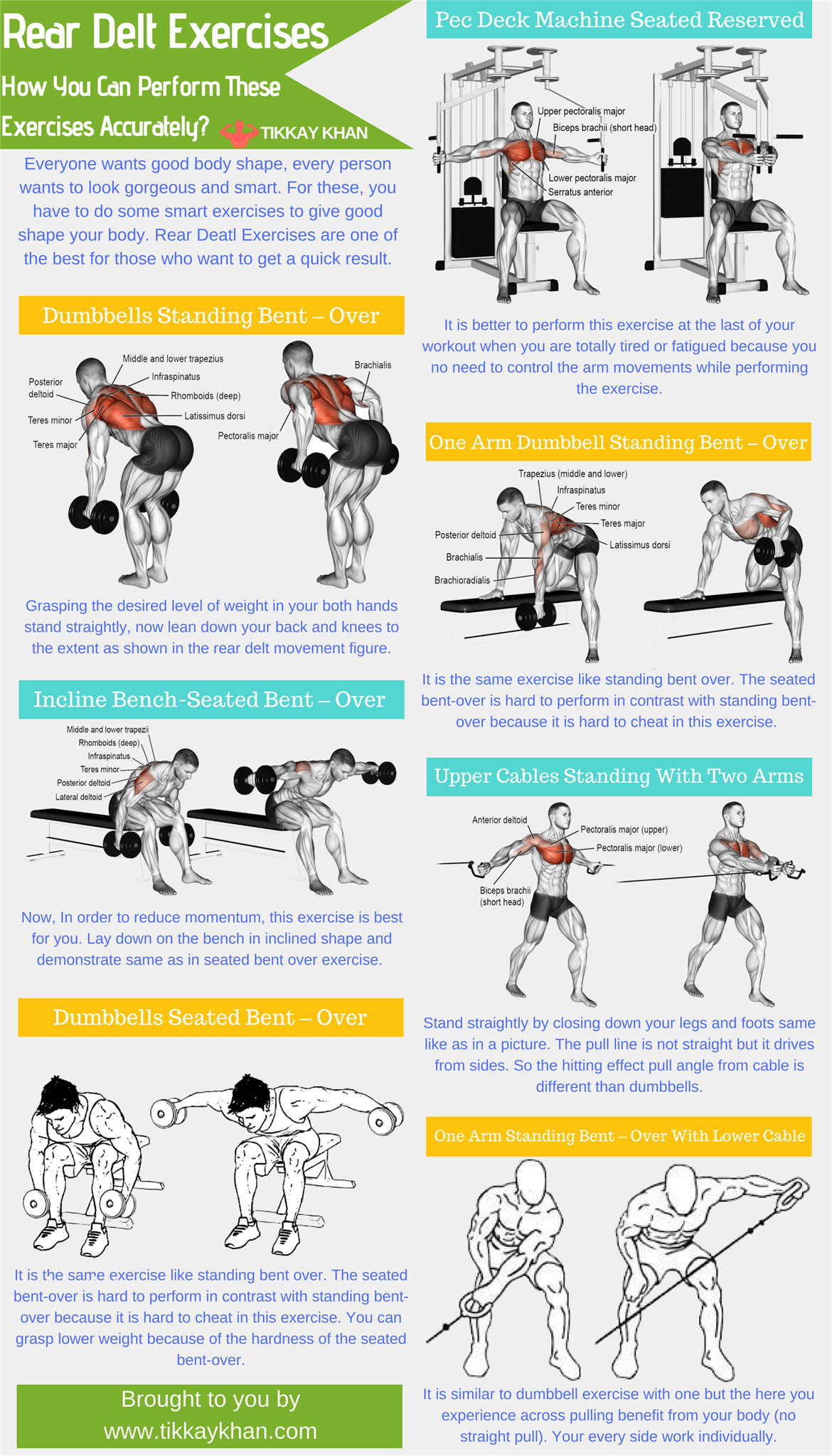
Everyone wants a good body shape; every person wants to look gorgeous and smart. For these, you have to do some smart exercises to give good shape to your body.
Rear Deal Exercises are one of the best for those who want to get a quick result.
It is a delightful experience to train in an empty gym. You can superbly perform the exercises with determination; you can perform any exercise at any time with any equipment. However, You can find rarely find an empty gym; more often, gyms are overcrowded with people, and you need to wait in line to use the equipment.
While entering the gym, you must know about the alternative exercises and multiple uses of the single gym equipment when the gym is full of people and it is hard for you to wait. For example, if you want to use specific equipment, you do not need to look after plan B or option c.
However, discarding your desired gym exercise equipment can be disturbing for you, but it is a disguised blessing. The know-how to perform the exercise with variations is advantageous for optimal muscle progress. Diverse equipment that focuses on your desired muscles with inimitable angles and stresses, which work as the main stimulus for body muscle development.
In contrast to each other, Smith machines, Barbells, cables, dumbbells and machines have their benefits, and all have different manners of work for the muscles. If you have these kinds of equipment in your exercises, it will not be difficult for you to build muscles completely.
Tower Of Strength – Rear Delts
Rear delt raise is a joint movement for the rearmost delts; you can perform this exercise in several variations. All these movements, by contrast, are different because of slight and small changes. If you are trapped in a furrow or close to a training plateau, then these diversified movements can truly help you.
No need to consider this instruction for the definite rear delts. Heightening muscle development is about performing the exercise in a variation or multiple ways and comprising every single deviation in routine work. Fastness is not important if you want to become a bigger bodybuilder.
Variations In Rear Delts
1. Dumbbells Standing Bent-Over
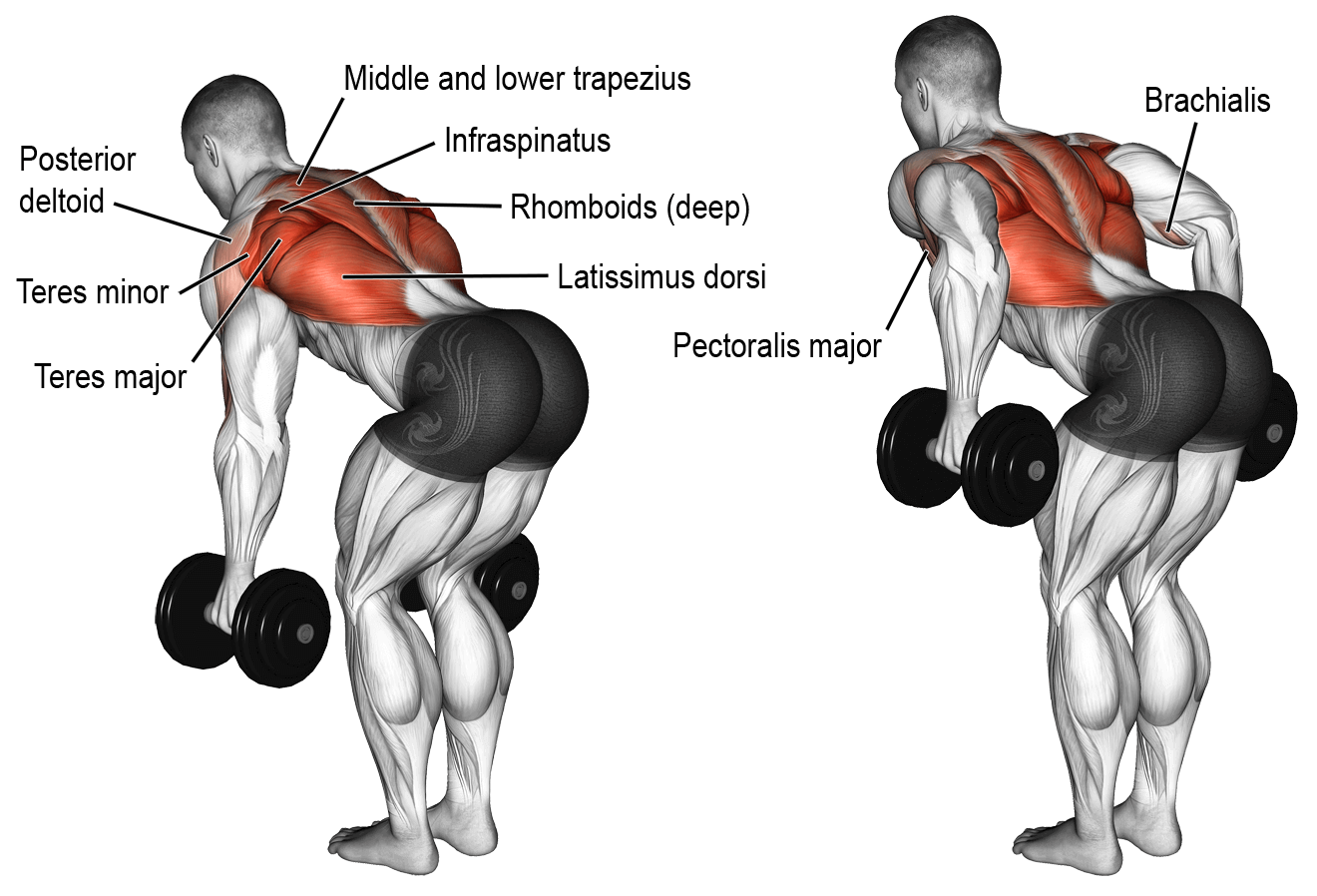
By grasping the desired level of weight in both your hands, stand straight, now lean down your back and knees to the extent shown in the rear delt movement figure. By keeping a slight twist in your elbows, lift the weight in the curve as high as possible. Your hips and knees help you in lifting the weight.
2. Incline Bench-Seated Bent – Over

Now, To reduce momentum, this exercise is best for you. Lay down on the bench in an inclined shape and demonstrate the same as in the seated bent-over exercise. Keep steady and close your feet to become stable the body. To minimize the momentum, your chest is touching the pad.
3. Dumbbells Seated Bent-Over

It is the same exercise as standing bent over. The seated bent-over is hard to perform in contrast with the standing bent-over because it is hard to cheat in this exercise. You can grasp lower weights because of the hardness of the seated bent-over.
4. Pec Deck Machine Seated Reserved
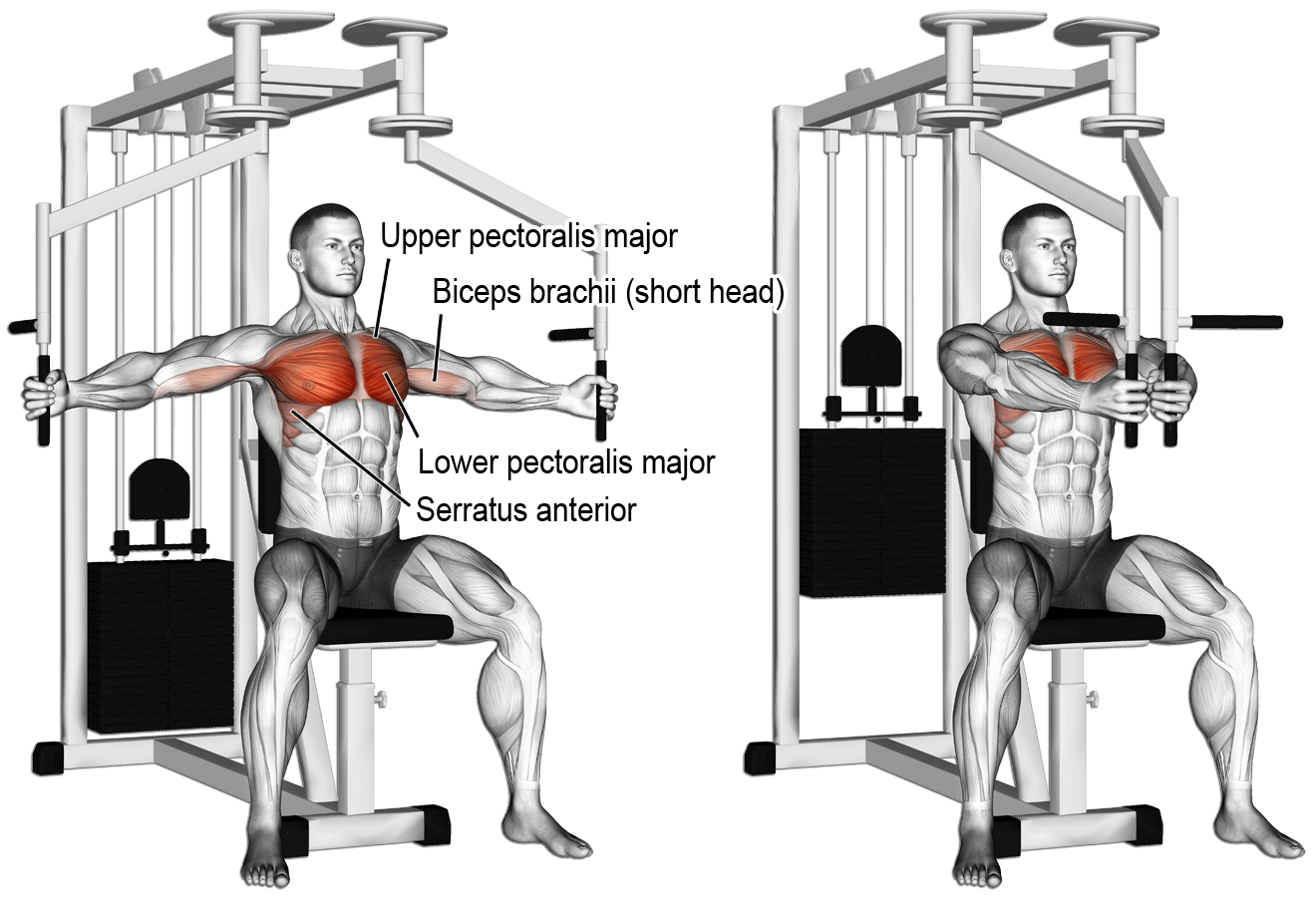
It is better to perform this exercise at the last of your workout when you are fatigued because you need to control the arm movements while performing the exercise.
On this machine, you can lock your arms in the curved position; it is suitable if you have a bad practice of bending your arms, especially in late exercises. It is one arm motion performance.
5. One Arm Dumbbell Standing Bent – Over

It is the same as standing bent-over; however, in this exercise, you lift only one hand in contrast to two lifting in the standing bent-over. First, you can do this exercise with your right hand individually, then change the hand and demonstrate it on the left hand. With your hips and knees, you are creating momentum, as the picture shows.
6. Upper Cables Standing With Two Arms
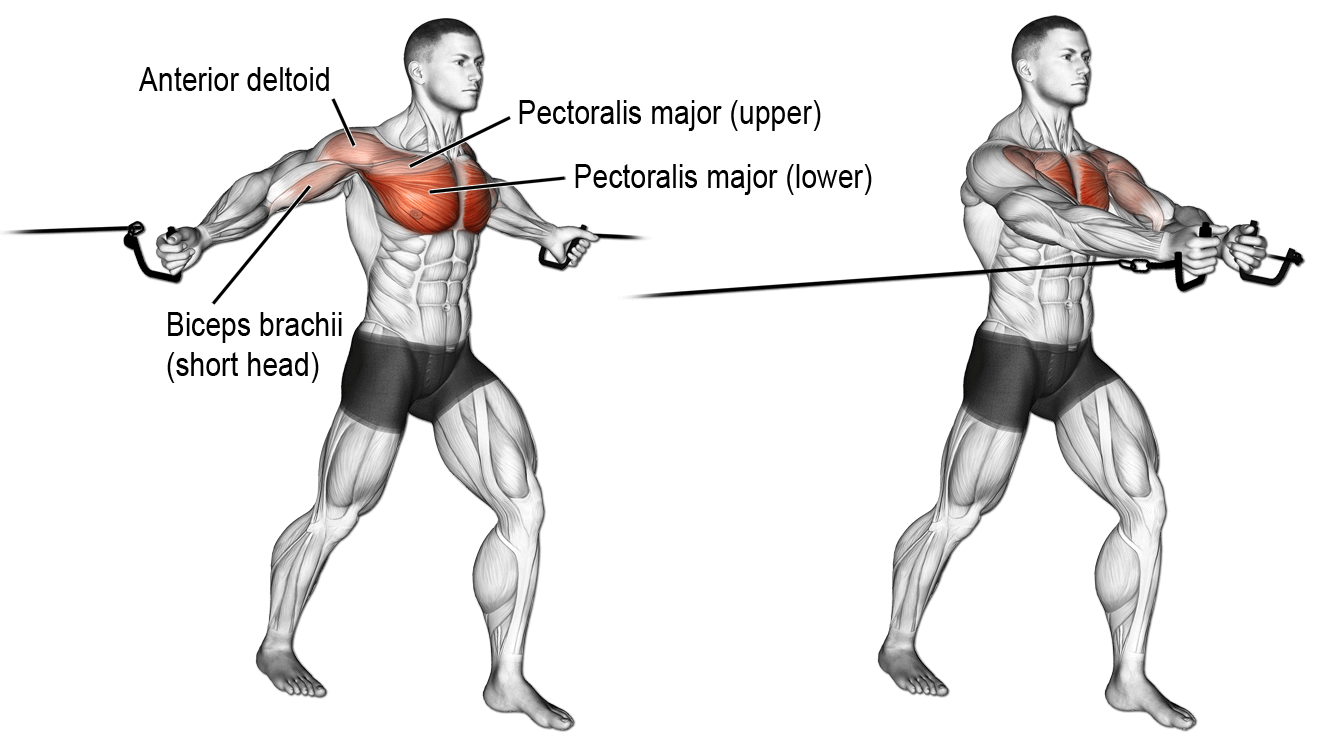
Stand straightly by closing down your legs and foots, the same as in the picture. The pull line is not straight, but it drives from the sides. So the hitting effect pull angle from cable is different than dumbbells. There is still stress on the rear delt because the stack is not kissing the plates. This constant tightness causes more development in muscles.
7. One Arm Standing Bent – Over With a Lower Cable

It is similar to dumbbell exercise with one, but here you experience across pulling benefits from your body (no straight pull). Your every side works individually. Retaining the neutral alignment makes it easy to grasp and lose your hands on the rubber ball.
Perform In Combination
Now you have learned all rear delts variations, so perform these exercise combinations whenever you are in the gym. Not stuck with these variations, you can be learned and start new ways of performing these exercises so that you don’t get bored or stuck in the gym.
Different names like shoulder raise, deltoid raise, rear shoulder raise and rear deltoid raise are known as the rear delt raise exercise. The exterior is especially useful for your posterior muscles. It affects on scapulothoracic joint and glenohumeral joint on both shoulders.
The scapular movement creates movement in the acromioclavicular joint and sternoclavicular joint. The rowing motion can be in form due to the elbow bending in the stretching exercises.
Transverse Procedure
To accomplish this, the bodybuilder adopts to dispose into the spoke cage position. The position includes bending, standing, or facing down, lying on an incline bench. Although the flat is, suitable inclines are also important. First, you need to straighten your arms by standing, to bend or to lie down on an incline, and bring up the hands on one or both sides at exactly a 90 degrees angle from the body. The leverage of the weight is the most important thing that needs to be done accurately while a little curve in the elbow while fully stretching out.
It is a shoulder joint isolation exercises most demonstrated with the help of dumbbells.
To execute the exercise, the weightlifter attains a prone rib cage position. This is usually done by standing, bending, or lying face-down on a bench. Flat is ideal, though slight inclines can also be used. The arms hang straight down. The goal is to bring the arms to the side, away from the body, at a 90-degree angle. While leverage is most difficult with fully extended elbows, a slight bend is useful as it allows the lifter to maintain awareness of this.
This movement is commonly done using dumbbells to add resistance to the weight of the arms. It is mostly a joint isolation movement of the shoulder.
Transverse Abduction Exercises
These exercises include of dumbbell fly end; the dumbbell fly begins unilateral lying, the dumbbell fly starts bilateral lying, the dumbbell fly ends bilateral standing, the dumbbell fly starts bilateral lying, and the dumbbell fly begins unilateral lying.
The cable transverse abduction exercises may include bilateral band fly end, bilateral cable fly begins, band fly begins bilaterally, and cable fly ends. Bilateral and unilateral cable raise begin.
Transverse Stretching Exercises
A neutral grasps by the forearm, the superior backhand, and the inferior palm. The elbows must be in the direction of the scapulae. In transverse stretching, the latissimus dorsi muscles assist rotators. To keep the elbow straightened, the triceps brachii and anconeus muscles work well.
While lifting, you should need to put stress on the rear deltoid. Avoid the chest motion; keeping the body away from the elbows is imperious. Ideal isolation is committed in this way. In the start, subsequent fibres were trained in many ways, so there was a need for heavyweights.
The bent-over row is a compound variation demonstrated with a wide grip and is a focus variation while allowing the elbows outside. As opposed to rear delt raise, it is also named as raise.
Supine rows or bodyweight focus on the rear delts, performed with a wide overhand grip. It gives strength to the legs and lowers the back.
Barbell Rear Delt Row Begin And End
The Barbell rear delt row begins and ends; stand straightly in front of the weighted barbell. Lean down slightly and grip the barbell with your two hands. Bring up the barbell equal to your chest and take it further up if possible or put it down back.
Law down on the carpet flatly or on the mat. Start with a barbell rod quite close to your chest, and grasp it with both hands at an equal distance. Now pull the weight up, you can also add plate weight on both sides of the barbell rod, but if it starts, you can use it without any weight plates. By looking upwards at the ceiling, lift the weight upon the chest. Cable crossover has the same effects as supine real delt row.
Dumbbell Hyper Extension Procedure
Hyperextension Row With Dumbbell

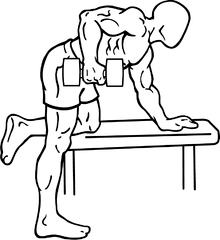
In this exercise, you must grab a desired level-weight dumbbell in your right hand and place your left leg knee area on the horizontal flat bench. Slowly bring up the right arm with a little curve in the elbow. During this exercise, place your one hand on the bench and lift the weight up to 8 to 12 times in each set; a total of three to four sets are enough to perform the hyperextension.
Rear Delt Exercise Some Major Benefits
Most people want to know about the deltoid muscles focusing area; the focusing areas for the deltoid are sided deltoids and front deltoids. As deltoids reside on our backs, so these are the most neglected area of our body. You need to take deltoids in your exercise plan seriously for a strong and bigger shoulder-building process.
By bending and stretching these exercises delivers your desired level of benefits and results. These exercises comprise powerful and energetic movements that mainly focus on shoulder joints like the glenohumeral and scapulothoracic joints and also two more joints named as a, sternoclavicular and acromioclavicular joints. The elbow curving and rowing motion also create these stretching and bending exercises.
The Need For Practicing The Rear Delt Raises
Usually, a question in mind should need to be clear what are the benefits of the Rear Delt Raises? Yes, it is because:
- Deltoid muscles develop for strengthening and developing the back muscles.
- These exercises create a balance in both your shoulders.
- It creates strength and patience to demonstrate other exercises properly, like bench presses and squats.
- It prevents you from injuries on your shoulders and issues related to the rotator cuff.
Your experiences with us in the comments section below.
How To Perform Bent Over Rear Delt Raises Properly?
Rear delt work inclusion in the workout is due to high effectiveness for shoulder joints and the development of the shoulders muscles.
Two Critical Tips Regarding The Bent Over Rear Delt Raises

The first Critical Mistake Is Pulling the Backing Of the Shoulder Blades
Try separating the rear delts during this workout, as it is not exercise related to the upper back. Anyhow, Try to touch your shoulder blades while lifting the weight and do it by everybody in routine while bringing the weight up.
Withdrawing or pulling back the blades of your shoulders and helps to remove the stress on the rear delts. By drooping forward, your arms are in the whole movement by keeping the blades of your shoulders in the flattening position. Apply energy from the side of the rear delts to lift the weight.
Due to this, all of the strain or stress is put on the rear delts, the main focusing area.
Second Critical Mistake Is the Use Of Dumbbells As A Replacement For A Cable
Dumbbells are the best option as an alternative to cable and put stress mainly on the back delts medium range motion. They have no effects or stimulation on the lower back delts because of the straight pulling down.
The solution to this problem is: You can perform this with a substitute cable.
Cable places a motion equally from the top to the bottom of the rear delts and benefits you with growth and stimulation.